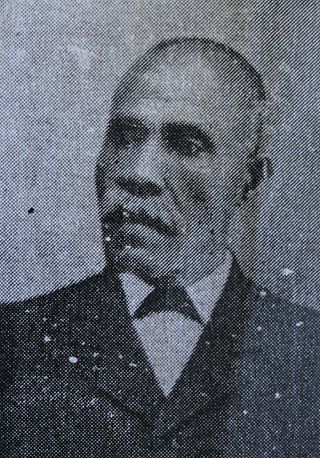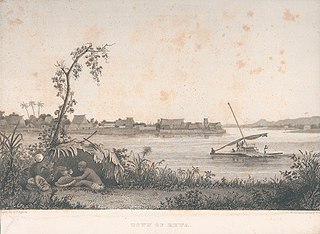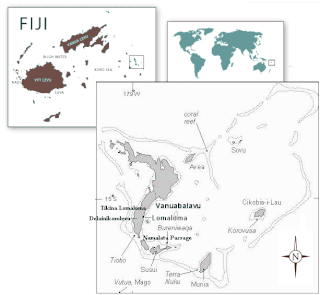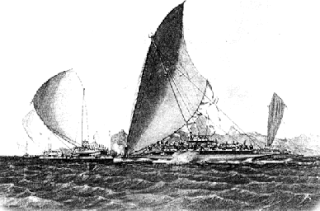Verata [1] is a tikina in Fiji's Tailevu Province. It is made up of several sub-districts or Tikina makawa , namely: Verata, Namalata, Tai, Vugalei, and Taivugalei.
Contents

Verata [1] is a tikina in Fiji's Tailevu Province. It is made up of several sub-districts or Tikina makawa , namely: Verata, Namalata, Tai, Vugalei, and Taivugalei.

Verata, Namalata, Tai, and Vugalei have both coastal areas as well as extensive inland undulating and rugged terrain, while Taivugalei is completely landlocked and much further inland of/border Verata and Namalata. Shellfish, Fish, coconut, taro, tapioca and a range of local vegetables and seafoods are the main trading merchandise.
The traditional leader is the Na Bure Levu o Naisanokonoko, Nodra na Gone Turaga Bale, O Koya Na Ratu who traditionally is acknowledged as the most senior member of Fiji's tribal hereditary chiefs. [1] [2]
Fijian oral tradition holds that Fiji was settled by the legendary ancestral chief Lutunasobasoba. The first "Na Gone Turaga Bale O Koya Na Ratu" Rokomautu was said to be one of Lutunasobasoba's sons. Verata shares this distinction with the vanua of Rewa (Burebasaga), Bureta, Batiki, and Kabara whose ancestral chiefs were the children of Lutunasobasoba.
Most of the chiefly households on the Eastern half of Viti Levu as well all of Vanua Levu and Lau including Bau acknowledge either direct descent or some other strong connection to the vanua of Verata. [3]
The sub-districts are in themselves separate Vanua with their own chiefs, but the Vanua of Verata used to cover a much wider area.
In tribal Fiji, the power and therefore size of a vanua depended on the chief's ability to hold the "qali" or subject people, and to control the "bati" or border people. Bati is usually translated as warrior because they often were, but the literal meaning of "bati" in this sense is border (or edge). "Vanua/Yavusa Qali-tu" or subject peoples/tribes often rendered service only as long as the paramount chief was strong enough to enforce his rule. It is difficult to say with any precision how far Verata influence reached but at its zenith it was the pre-eminent vanua of ancient Fiji. [4]
It was eventually eclipsed by the rise of Bau and the changing face of tribal war with the arrival of beachcombers and marooned sailors like the well-known Charles Savage who came to serve Bau much to Verata's disadvantage in 1808. In 1825, Bau had wrested from Verata, control of most of the island Ovalau including Levuka with the exception of Lovoni. Gau, Koro, Nairai and Batiki were soon to follow. By 1828, 20 years after the arrival of Savage, Ratu Naulivou (Vunivalu) had seized control of much of coastal eastern Viti Levu up to the delta of the Ba river. In 1829 Verata lost the allegiance of the powerful island and vanua of Viwa, who were to prove a vital role in the coming decades in the internecine conflicts. When Naulivou died later that year, he handed to his brother and successor Ratu Tanoa Visawaqa a powerful vanua whose only remaining rival was its closest ally the vanua of Rewa.
With the loss of Viwa, Verata lost all hope of ever regaining supremacy and lost the majority of engagements with Bau after 1829; [5] Although, with the help of its own European, Matthew Riley, was able to hold onto what was left and even won a few skirmishes with the aid of various tactics and temporary alliances with Tui Cakau, Bau's ally and erstwhile reluctant vassal (from 25 September 1840–July 1841) and managed to attack Bau itself. [6] Another notable example was 26 April 1850 when they soundly rebuffed an attempted Bauan raid in which the notorious Lasakau chief Ratu Gavidi was shot in the back and killed. [7] Riley was given one of the chief's daughters and the island of Naigani in thanks and the island was settled by Riley, his young family and several families to serve as retainers to the young Adi and her children.
Public infrastructure is less developed than in other districts in Fiji. The district is joined to other provinces by the Kings Road, one of the country's main highways, which recently has been tar-sealed for most of its length.
As with most rural development, projects are generally carried out on a communal basis with finance sourced from central and provincial government, aid donors and the people themselves locally as well as remittances from urban areas and those working abroad. Examples of projects are village pipe water system, power generation, village toilets and septic tanks, village meeting halls, nursing and health stations, schools and pre-school facilities.
Many landowning units are interested in developing their land commercially and whilst there are many options, capital is scarce.

Articles about people, places, things, and concepts related to or originating from Fiji, include:
Ratu is an Austronesian title used by male Fijians of chiefly rank. An equivalent title, adi, is used by females of chiefly rank. In the Malay language, the title ratu is also the traditional honorific title to refer to the ruling king or queen in Javanese culture. Thus in Java, a royal palace is called "keraton", constructed from the circumfix ke- -an and Ratu, to describe the residence of the ratu.

Ratu Joni Madraiwiwi was a Fijian Ratu and early colonial administrator in what was then the British Crown Colony of Fiji.
The House of Chiefs in Fiji consists of the Fijian nobility, composed of about seventy chiefs of various ranks, majority of which are related. It is not a formal political body and is not the same as the former Great Council of Chiefs, which was a political body with a prescribed constitutional role, although the membership of the two bodies did overlap to a great extent.
There are three confederacies in the Fijian Traditional Government, Kubuna, Tovata and Burebasaga. One of the two Paramount chiefly tribes in the Kubuna Confederacy is the "ToraniBau" the other

Bau is a small island in Fiji, off the east coast of the main island of Viti Levu. Bau rose to prominence in the mid-1800s and became Fiji's dominant power; until its cession to Britain, it has maintained its influence in politics and leadership right through to modern Fiji.
Naitasiri is one of the 14 provinces of Fiji and one of eight located on Viti Levu, Fiji's largest island.

Rewa is a province of Fiji. With a land area of 272 square kilometers, it includes the capital city of Suva and is in two parts — one including part of Suva's hinterland to the west and a noncontiguous area to the east, separated from the rest of Rewa by Naitasiri Province. The province had a population of 108,016 at the 2017 census, making it Fiji's third most populous.

Tailevu is one of the 14 provinces of Fiji. Its capital town is Nausori which lies along the banks of the Rewa River.

Lomaloma is a village at the south of the island of Vanua Balavu in the Lau archipelago of Fiji. The settlement is part of the tribal district of Tikina, Lomaloma and consists of 9 villages, 13 Yavusa (tribes), 42 Mataqali (clans), and 54 family units known as Tokatoka. The nine villages of Lomaloma Tikina are Lomaloma, Sawana, Susui, Narocivo, Namalata, Uruone, Levukana, Dakuilomaloma, and Tuvuca.
Elenoa Serukeirewa (1875–1930) was a Fijian Adi (chief), the daughter of Ro Waisea. L. Qioniwailevu and Adi Veniana Draukibei. Ro Waisea was the "Vunivalu na Vosaibaleni" of the Yavusa Nawainovo from the tokatoka Nauluvatu. Adi Elenoa was the last member of this lineage. Before she died in 1930, she held the title "Vunivalu na Vosaibaleni", inheriting it from her father. She was also the last person to have been installed to this position. Her village was Kasavu, now located in the province and district of Naitasiri. Formerly, this village consisted of three tribes, including the Yavusa Nawainovo, where the "Marama na Vunivalu" is from, and which comprises the Mataqali Vunivesi. The other two tribes were the Yavusa Sawa, consisting of the Mataqali Rokoraite, and the Yavusa Burenitu, consisting of the Mataqali Aisokula, Rokotuinakoro, Vunileba, Tabuicovi and Naisogo. However, after the sitting of the Native Lands Commission the three tribes were combined into one known as the Burenitu tribe.
Fijian tradition and ceremony is a living way of life that has evolved as the Fijian nation has modernised over time, with various external influences from Pacific neighbours, and the European and Asian society. This general overview of various aspects of Fijian tradition, social structure and ceremony, much of it from the Bauan Fijian tradition although there are variations from province to province, uses "Fijian" to mean indigenous Fijians or I Taukei rather than all citizens of Fiji, and the Fijian terms are most often of the Bauan dialect. Many social intricacies depend on one's inherited social position and the occasion one is confronted with: each will have a particular social etiquette.

Turaga na Rasau is a traditional Fijian chiefly title of the Lau Islands. Prior to Fiji's colonial days, Fiji had many different Vanua with their own Paramount Chieftain which exercised no authority over the other; a saying from the island of Kadavu aptly summarises it "Nomu Turaga o sega na noqu Turaga" or "Your Chief is not my Chief" also the people of Beqa Island were of a similar opinion saying "Qali Cuva Ki Lagi" or "Subject only to heaven" and would bow to no outside Chieftain, but at the turn of the 20th century aspects of the traditional social structure remained, but for administrative purposes three main Matanitu were solidified and formed as they were the dominant consolidated powers at the time being that of Kubuna, Burebasaga and Tovata. With regard to the Rasau while its traditional origins were in Kubuna on Bau the titles traditional authority in modern Fiji is now in Tovata, Lau in particular Lomaloma Tikina on the Island of Vanua Balavu.
The Turaga na Ravunisa is a Fijian Chiefly title of the Lau Islands, in particular the village of Lomaloma on the Island of Vanua Balavu.

The Tikina of Lovoni is made up of the Fijian villages of Lovoni, Nasaumatua, Vuni-ivi-savu, Visoto, Nukutocia and Nacobo. The latter three villages are located on the coast of Ovalau. The paramount Chief of the Tikina of Lovoni which includes six villages is the Tui Wailevu the Vunivalu.
Taukei ni Waluvu is a Fijian phrase for "Owner of the Flood." It is the traditional chiefly title of the warrior hill clan Siko-Natabutale of Nairukuruku village. The history of the clan from the mid- nineteenth century, represent the social structures of the chiefly system, religion and western culture that supported colonialism in Fiji. Tradition, Christianity and British indirect rule were combined to legitimize what was accepted as the right way to govern. Condemned by some modern day critics as exploitative, the Fijian chiefly system was the medium of native social interdependence and a traditional contract shared by the indigenous clans of pre-colonial Fiji, that was utilized for colonial rule. Since Independence the chiefly system has had to adapt to the demands of modernity. Anthropologist Arthur Capell in his study of early tribal migration within Fiji made the point that, "the history of Fiji is the history of chiefly families." The phrase in fact emphasized the hierarchical nature of Fijian traditional society where chiefly power was held sacred. The relationship between Chiefs and Westerners in especially Missionaries thus became a focal point for gathering insight into Fijian culture and tradition in the nineteenth century. James Turner a latter anthropologist found, "The chiefly families of Nairukuruku were the first in the eastern highlands of Viti Levu to declare their allegiance to the central government and as a result of this support their influence expanded throughout the area".

The Lasakau Sea Warriors were a 19th-century warrior sub-culture in the pre-colonial state of Bau, in Fiji. The sea warriors were instrumental in spreading Bau's political power throughout the South Pacific archipelagic islands. The rise of the eminent islet of Bau amongst other embryonic states was due mainly to the projection of sea power through its naval forces. Bauan chief Ratu Loaloadravu Tubuanakoro was praised by French Captain Dumont D'Urville in May 1827 for his geographic knowledge of the Fijian archipelago signifying Bau's naval influence. More far-ranging than Bau's land warriors led by the Vusaradave clan, the Lasakau clan became the leading proponents of war and tribute for the emerging island kingdom. They became known as the Bai kei Bau or 'War fence of Bau'. Sahlins made the crucial observation that," The kings of Bau based their rule not on native cultivators but on native sailors and fishers-which is to say in Fijian categories, as in political strategies, not on the land but on the sea". This was the great political transformation that catapulted Bau to power over other pre-colonial kingdoms.
In Fiji, Turaga na Roko Tui Bau is a vassal chief of the Vunivalu of Bau. From his seat at the residence of Naicobocobo, the Roko Tui Bau rules the Vusaratu chiefs and has relationships with the Roko Tui Dreketi, Ratu Mai Verata, Roko Tui Namata, Roko Tui Veikau, Tui Vuya and other members of Fiji's House of Chiefs.

Navatu is a sub district in Cakaudrove; one of 3 provinces situated in Vanua Levu, the second largest island in Fiji. The sub-district, or "tikina" as it is known in the iTaukei language, comprises nine villages mainly occupying the eastern peninsular of the Natewa Bay. While Copra has been the main source of income for villages in the Navatu tikina, kava or yaqona is also becoming a fast growing commodity for villages within the Navatu sub-district.
Lutunasobasoba is considered to be one of the ancestors of the Fijian (iTaukei) people, along with Degei.